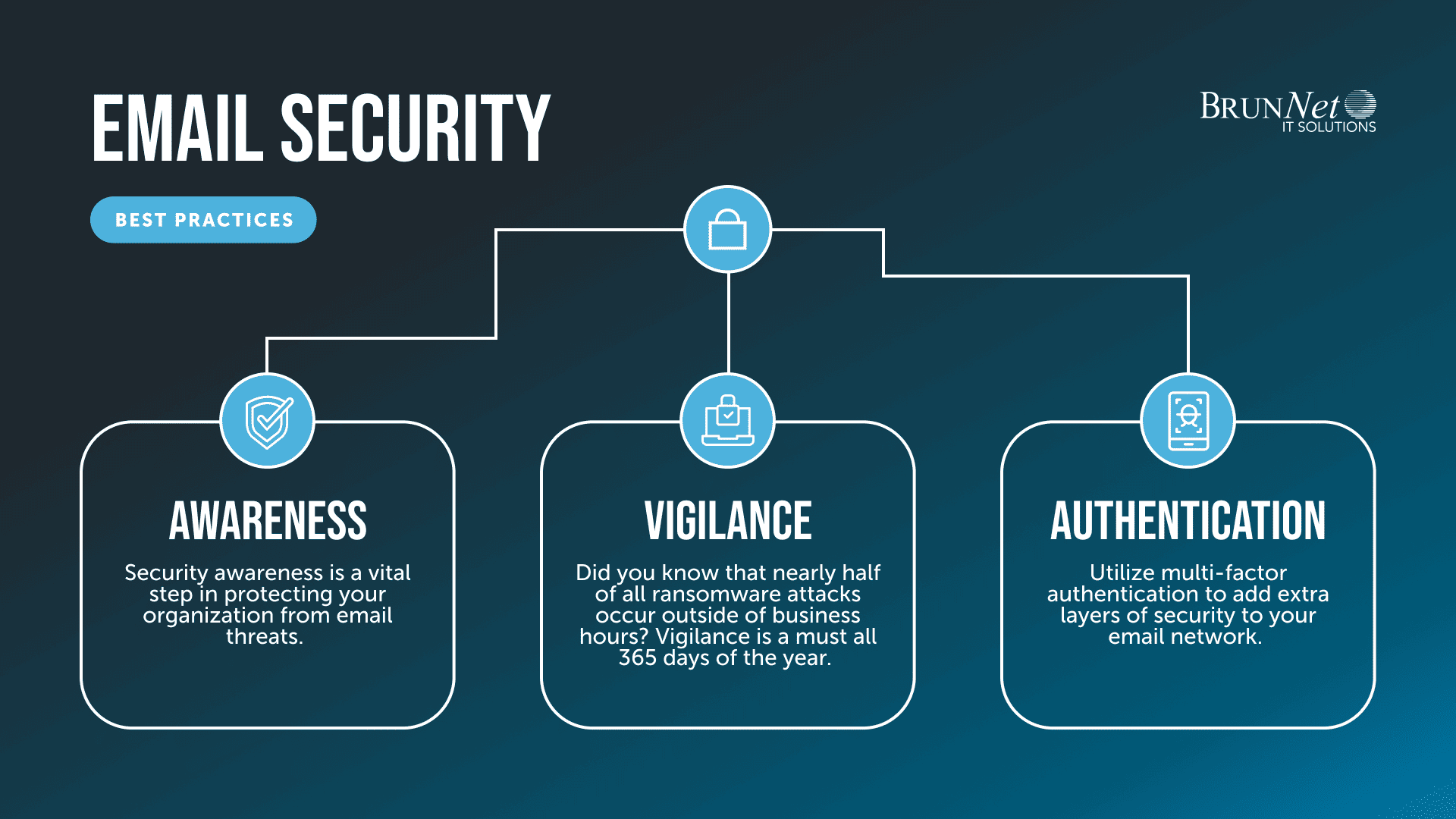With spam and phishing attempts becoming more sophisticated by the day, threats to email security have never loomed larger. Organizations must respond to these growing threats by taking extra steps to ensure the protection of their networks and data. We’ve compiled this list of best practices for Email Security in 2023 to help keep you, your organization, and your employees safe.

Awareness
Whereas one errant click of the mouse can bring down an entire network, creating security awareness among your team members is a vital step in protecting them and the organization as a whole. Simply put, the more aware your employees are of potential email threats, the less likely it is that they’ll fall prey to one of them.
Vigilance
Just because your team works from Monday to Friday, doesn’t mean that threats to your email security take the weekends off. Nearly half of all ransomware attacks occur outside of business hours, with a quarter of those happening on Saturday and Sunday. Whether it’s a sign-in from an unusual location or a change to your security policy, vigilance is a must all 365 days of the year.
Authentication
With so many platforms in our day-to-day lives, people will commonly use one password across all of their logins or resort to very simple passwords (e.g. 1-2-3-4) for ease of remembering. Because email usernames are often just that person’s email address, this form of verifying who you are – known as single-factor authentication – is a major security vulnerability.
Multi-factor authentication, or the process of requiring two or more pieces of identification, is a highly effective solution that leverages a phone app, SMS message, phone call, and username and password to add extra layers of security to your email network.
Additional Email Security Measures
EMAIL FILTERING
By scanning all incoming emails and monitoring attachments in connected apps (e.g. Teams, Slack, etc.), an email filtering service can help combat phishing, business email compromise, and malware attacks, helping to fill gaps left behind by antivirus programs.
DATA LOSS PREVENTION
Prioritizing the safety of your organization’s data will be key to its long-term success. By incorporating Data Loss Prevention (DLP) policies, you can secure sensitive information such as payment information, customer data, etc. and set rules on how that data can be shared
DMARC/DKIM/SPF
Some additional steps you can take include SPF, DKIM, and DMARC protocols. Sender Policy Framework (SPF) makes your servers more secure by limiting who can send emails from your domain. DomainKeys Identified Mail (DKIM) prevents your emails from being altered or compromised. Domain-based Message Authentication, Reporting and Conformance (DMARC) marry those two protocols together while ensuring the sender’s domain name is checked against what’s shown in the “From” header.
Awareness, Vigilance, Authentication, and these Additional Measures are just a handful of practices that can improve your email security. Contact BrunNet today to learn more about these and other ways to help prevent spam, phishing and other threats to your organization.
